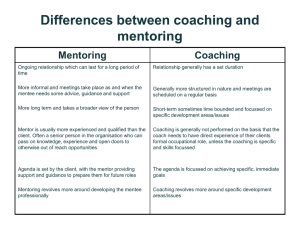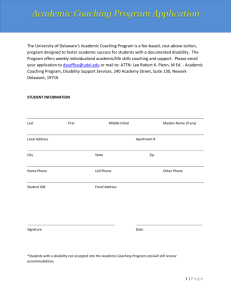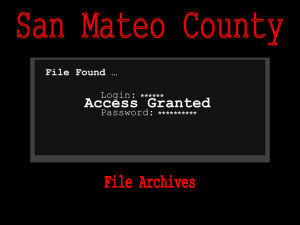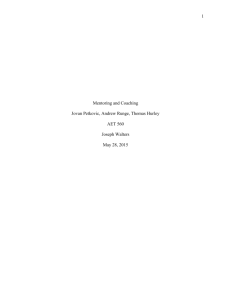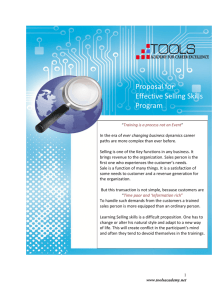Chapter 18
advertisement
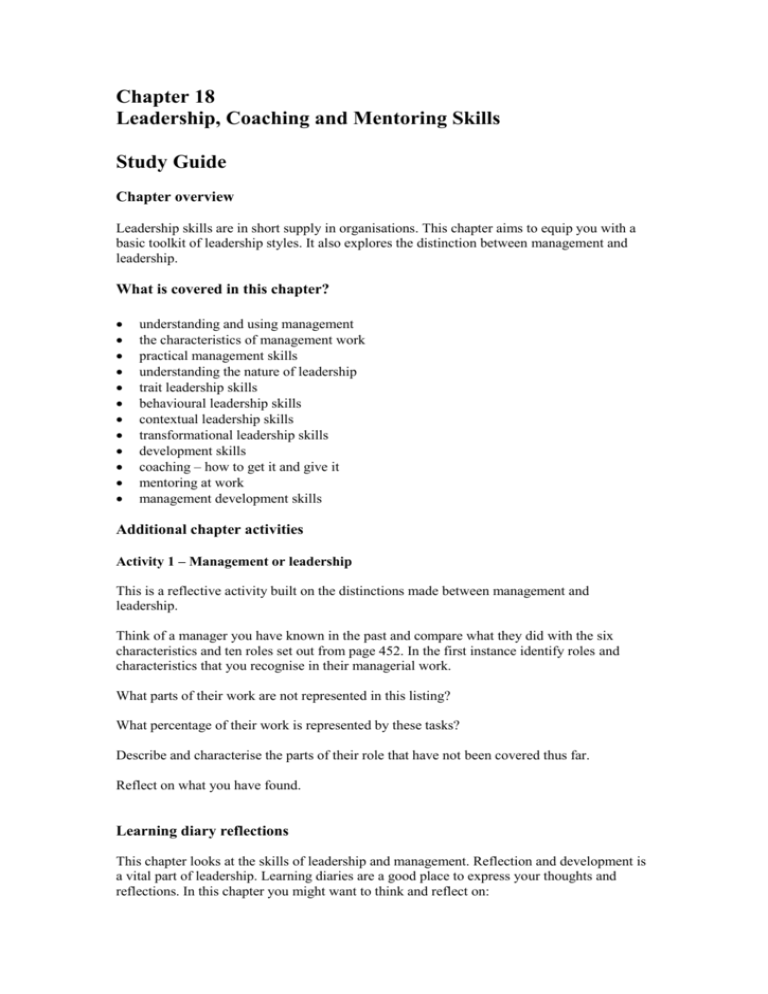
Chapter 18 Leadership, Coaching and Mentoring Skills Study Guide Chapter overview Leadership skills are in short supply in organisations. This chapter aims to equip you with a basic toolkit of leadership styles. It also explores the distinction between management and leadership. What is covered in this chapter? understanding and using management the characteristics of management work practical management skills understanding the nature of leadership trait leadership skills behavioural leadership skills contextual leadership skills transformational leadership skills development skills coaching – how to get it and give it mentoring at work management development skills Additional chapter activities Activity 1 – Management or leadership This is a reflective activity built on the distinctions made between management and leadership. Think of a manager you have known in the past and compare what they did with the six characteristics and ten roles set out from page 452. In the first instance identify roles and characteristics that you recognise in their managerial work. What parts of their work are not represented in this listing? What percentage of their work is represented by these tasks? Describe and characterise the parts of their role that have not been covered thus far. Reflect on what you have found. Learning diary reflections This chapter looks at the skills of leadership and management. Reflection and development is a vital part of leadership. Learning diaries are a good place to express your thoughts and reflections. In this chapter you might want to think and reflect on: Do I really understand the difference between management and leadership? What do I think are the characteristics of management work in the twenty-first century? Can managers learn management as they go along? Is there any point in teaching leadership? How good a leader will I be? Do I want to be a leader? Do leaders need to be managers? Do managers need to be leaders? What are the characteristics of good leaders I have known? Can I learn to be a good leader by observing good leaders? Can I change my leadership style? Am I stuck with one leadership style? What is my style of leadership? Do team members always hate the leader of a team? Do I really understand the different leadership styles? What is the difference between the leadership styles? What do I thinking about coaching? Do all employees need a mentor? Test your learning Multiple choice questions 1 (a) (b) (c) (d) 2 (a) (b) (c) (d) 3 (a) (b) (c) (d) Which of the following is leadership rather than management? setting vision and direction managing staff workloads setting up control systems developing systems Which of the following is NOT a recognised trait of good leaders? task competence ego-based behaviours valuing diversity intelligence Blake and Moulton’s managerial grid is based on which two dimensions of leadership? people/money people/leadership people/process people/production 4 In the country club management style portrayed by Blake and Moulton’s managerial grid, concern for people is… (a) (b) (c) (d) 5 irrelevant low high middle Contextual leaderships aligns leadership with… (a) (b) (c) (d) leadership power team relations task structure all of these Please refer to the ‘Study Guide: Answers’ document, also on the student support site, for answers to all of the quizzes in the study guides. Reflective question How important is training and development in modern businesses? There is always pressure to spend money effectively and training and development can look like a waste of money – how would you respond? Has anyone or any company ever created a case for training and development as an economic imperative of business? If not, why not? Chapter summary As a business manager, leadership and management skills will determine how effective you are at work. In time you will develop your own personal style, but this chapter should help you with the basics. o o o o o o o o o o According to Mintzberg, management involves the following roles: figurehead leader networker monitor disseminator spokesman entrepreneur disturbance-handler resource-allocator negotiator. o o o o Management in practice carries out a range of functions similar to these: organising analysing evaluating planning o o o financial monitoring negotiating paperwork. o o o o o o Leadership can be approached from different theoretical positions: trait leadership behavioural leadership contextual leadership transformational leadership authoritarian leadership charismatic leadership. o o o o o Development activities in organisations can take many forms, including: mentoring coaching executive coaching informal learning formal learning. Chapter web links The Association of Coaching: http://www.associationforcoaching.com/home/index.htm CIPD site for management development: http://www.cipd.co.uk/subjects/lrnanddev/mmtdevelop Edward de Bono and Robert Heller’s Thinking Managers site: http://www.thinkingmanagers.com/business-management/leadership.php




